We may get a small commission if you buy something through a link in our posts.
Last updated: December 7, 2022
If you’re a food blogger, you will most likely be familiar with the jump-to-recipe button. And you may also know that this little button is often the cause of heated debates.
These debates revolve around SEO and advertising revenue. Some say you should never use that button, as it negatively impacts ad revenue. Others say that there are SEO benefits in having that button at the top of your recipe articles.
I am not a food blogger and therefore I’ve always tried to stay out of these discussions. But being the SEO nerd that I am, I couldn’t resist diving a little deeper into this. So, in this article, I am sharing my thoughts on the jump (and print) recipe buttons and how they relate to SEO and ad revenue.
Please note that this article was first published in 2019, at a time when the jump-to-recipe button was very much a hot topic. Things have evolved enormously since then, and today, in the year 2022, using the jump-to-recipe button in food blogs is standard practice. Good for readers, good for SEO, everybody wins.
Quick navigation:
The Backstory
Let’s start with a few examples of Jump to Recipe buttons on various food blogs:
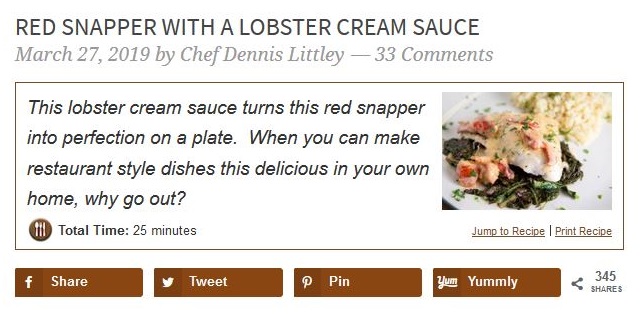
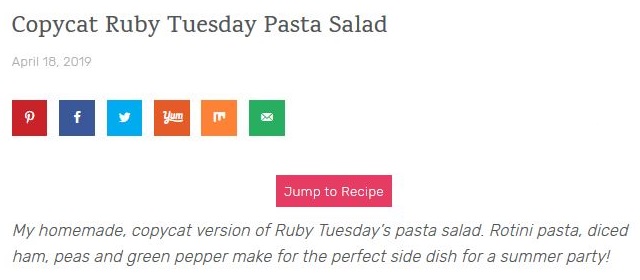
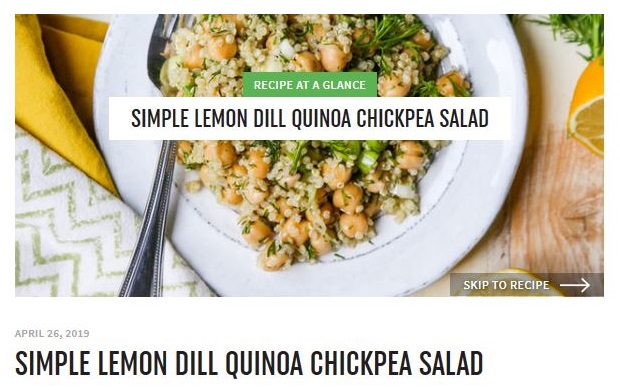
Okay, so you may be wondering, why on earth does that innocent little button (or a simple link, really) cause so much stir? Good question.
Most food blogs out there run ads on their sites to make money. A lot of these food bloggers use ad managers such as Mediavine and AdThrive to place ads on their sites. There is some good money to be made with display advertising, as you can read in my comprehensive Mediavine review.
The “issue” with jump-to-recipe is that it allows the reader to skip most of the content and jump straight to – you guessed it – the recipe. In other words, ads in the middle section of the article won’t be displayed or seen, which negatively impacts ad revenue.
It’s no surprise that ad managers typically advise against using a jump-to-recipe button for that reason. But then others say that having jump and print recipe buttons has SEO and user experience benefits.
In the private Mediavine Publishers Facebook group, that I am a member of, the ones saying that a jump-to-recipe button is a good thing typically do not get a lot of support.
And when they mention that there is an SEO benefit in having that button, they typically get slammed. Okay, “slammed” is a big word, but trust me when I say that these pro-button people are a very tiny and quiet minority.
Update December 2019:
After years of opposition, Mediavine have finally decided to include a Jump to Recipe feature in their Create WordPress plugin, finally recognizing the demand for, and user experience benefits of, this button. Well done!
Semrush and Casey Markee
Casey Markee is an SEO consultant who provides services such as site and content audits, with a lot of his clients being food bloggers. He has a fairly good reputation in the SEO industry and he seems to know his stuff.
Now, Casey, along with other SEO professionals, has always been an outspoken supporter of the jump-to-recipe button. He claims this button has SEO benefits and always recommends his food blogging clients include that button in their recipe articles.
Casey did an interview with Semrush a while back in which he mentioned the jump-to-recipe and print-recipe buttons, and why he recommends food bloggers to use them.
In that same interview, he had a bit of a dig at ad companies, because ad companies obviously advise against using that button. After all, it negatively impacts ad revenue. Casey believes that’s wrong because user experience is more important in the long term.
That very same interview has led to several heated discussions in the Mediavine Facebook group, and most people are simply not taking it.
Think about it. That group is heavily populated with food bloggers and is managed by an ad manager (Mediavine) that strongly advises against using the jump-to-recipe button. So it’s not a surprise that many bloggers in that group are going to hate on Casey in these discussions.
I find that quite frustrating because a lot of these food bloggers don’t have a deep understanding of SEO. They’re good at creating recipes with beautiful photos, and they’re good at playing the Pinterest game. And some of these blogs are actually very successful, get tons of traffic, and are earning lots of money.
But SEO usually is not their expertise. So they often don’t really understand that there is in fact a relationship between a jump-to-recipe button and SEO.
How? Let me explain.
Jump-to-Recipe Has SEO Benefits
No, you won’t see a jump in rankings when you add a jump-to-recipe button to your recipe articles; not going to happen. Similarly, you won’t see a drop in rankings when you take that button out either.
But does that button improve user experience, even just a tiny little bit? Yes, absolutely. And is user experience important in regards to SEO? Yes, it’s extremely important.
That button is one of so many aspects of a website that can influence user experience positively, even if it’s just a tiny little bit. And a better user experience leads to longer time-on-page, less “pogo-sticking”, lower bounce rate, etc. It’s those signals that can ultimately have a positive impact on your organic search rankings.
So, no, Google is absolutely not going to look for a jump-to-recipe button in an article and move it up in the rankings if it can find one. It’s not at all a ranking factor as such.
But that’s not the point…
User Experience
What matters, is user experience, and that little jump-to-recipe button can improve overall user experience. Just like so many other things can lead to an improved user experience.
I’ll be honest here though. I can totally understand why food bloggers instinctively would take that button out, for the sake of increasing ad revenue. But if we take ad revenue out of the equation, I think we can all agree that the jump-to-recipe and print-recipe buttons in recipe articles are good user experience elements.
And it’s not just those buttons. There are many other things to consider on a food blog to improve the overall user experience so that readers stay on websites longer, bounce rate improves, more readers sign up for newsletters, etc.
Things like no clutter, no annoying popups, good page speed, no fluff content, bigger font, shorter paragraphs, all those good things. This will lead to positive SEO signals and improve your organic search result rankings in the long term.
Are Online Recipes a Nuisance?
Check out this tweet by Chelsea Peretti, which sparked a huge debate in the Mediavine Facebook group:
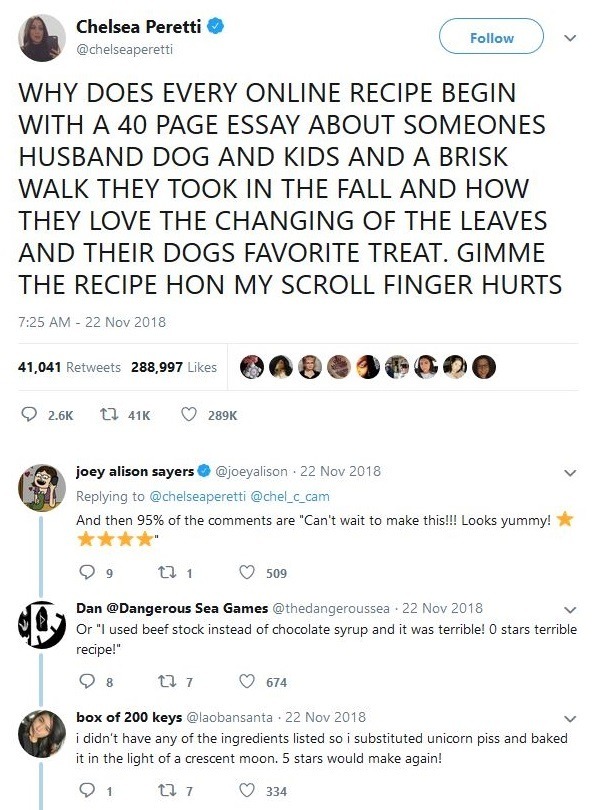
She’s a comedian and, obviously, she’s just being cynical here. But she’s also making a valid point. And it’s a bit of a sensitive point. Some people in the group actually took this tweet very seriously and became quite defensive about it.
The reality is though, that a lot of food bloggers add tons of “unnecessary” content to their recipe articles. They typically do this for two reasons:
- They genuinely believe they need to write lots of words to “please” Google.
- They want to increase their ad revenue. The longer the content, the more ads will be displayed, and the higher the ad revenue.
In all fairness, some bloggers are actually very decent writers and the “extra” content they add can sometimes be very good, entertaining, and useful.
But if you do a bit of browsing on food blogs you will see that the struggle is actually real. Many food bloggers do add “fluff” content to their recipes with only one goal, and that is to increase their overall ad revenue.

A jump-to-recipe button is a good solution. Those who want to read your content will do so. Those who only want to read your recipe can jump straight to it.
And the better the user experience, the more Google will appreciate your website in the long term. A win-win situation.
It all comes down to finding the perfect balance between user experience, growing your blog, and maximizing ad revenue. It really isn’t all about the money. If anything, the better the overall user experience on your blog, the more money you will make in the long term.
JOIN BLOG PIONEER
Subscribe now and receive tips and thoughts on blogging, SEO, and WordPress straight to your mailbox.
Final Thoughts
If you’re a food blogger, hopefully the above makes sense. There is indeed an SEO benefit in having that jump-to-recipe button in your recipe articles. A tiny benefit perhaps, but the correlation between the two most definitely exists.
But it’s important to understand why, so you can make an informed decision on whether or not you’re going to include it. There are always two sides to a story, and there’s never a one-size-fits-all solution.
Long story short, having a jump-to-recipe button on your food blog is a personal choice. User experience, SEO benefits, ad revenue; there are a lot of things to consider, and it’s a balancing act.

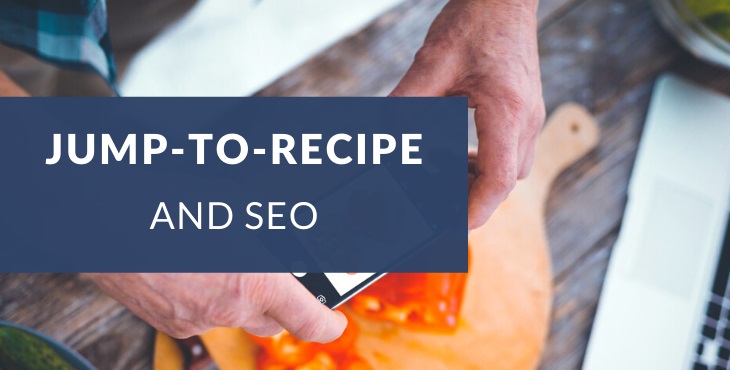



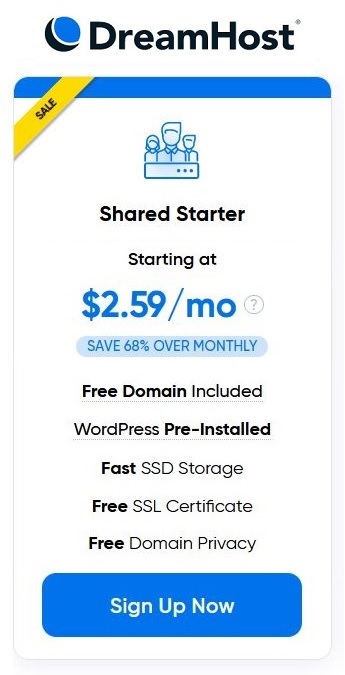
You should put a “Jump to Final Thoughts” button on this page.
Brilliant! It’s in the Quick Navigation bit at the top.
There seems to be a real disconnect when it comes to the food blogger community and understanding of SEO. I’m sort-of-but-sort-of-not a food blogger. I’m a homemaking blogger, so I do post recipes, but they aren’t the entirety of my content. And I routinely hear from bloggers annoyed and offended by commentary like the tweet above that they have to include those essays at the beginning of their posts if they want to rank in Google. They seem oblivious to the fact that if the “essay about their husband, dog and kids… and the changing of the leaves” is not actually related to the recipe, it isn’t going to help them rank for what they want to rank for.
An essay about family and fall doesn’t help you rank in Google for “best hot cocoa ever”. An essay about childhood in France doesn’t help you rank for “chicken casserole”. They help you rank for things like “family and fall” or “childhood in France”. This seems so elementary in the world of SEO, I find it truly baffling.
Thanks Rachel, I mostly agree with you. Word count isn’t a ranking factor, and adding unrelated fluff content isn’t helping Google at all.
If you do want to up that word count, it’s best to go into more detail about the actual recipe itself, where to buy the ingredients, insider cooking tips, etc.
That said, there is of course nothing wrong with adding a few anecdotal sentences explaining how you got the idea about the recipe and such.
This post was great! I actually came searching for it after the Jump to Recipe button conversation popped up again in the Mediavine FB group. I have the button and have ever since I originally spoke with Casey about my site back in 2018. It’s yet another facet of blogging that is trial-and-error and a total balancing act. I increase user-experience, but that typically coincides with decreased ad revenue.
Thanks Sara!
I’m not a food blogger but I would test RPM for 3 months WITH the jump button and compare those stats to the same months in the year before. If RPM doesn’t suffer as much, I would definitely keep the jump to recipe button in place. Also look at factors such as time-on-page, bounce rate, etc., as these are important user experience signals, and that is ultimately what this is about.
I think we can all agree that the jump-to-recipe offers an improved user experience, but how that ultimately translates into better SEO is extremely difficult, if not impossible, to isolate and test. I also think that people saying that ad revenue completely tanks as a result of this button are exaggerating.
As an SEO and web developer, I could not agree more. I completely understand why this is such a sensitive subject though. Earning ad revenue from a blog is crucial to being able to support the site, continued production of quality content and of course, the bloggers themselves.
I do my best to objectively look at a situation from all sides. I’ve been an SEO and developer going on 17 years now so taking off my SEO hat for a while can be impossible at times, but in regards to this particular issue I feel comfortable commenting because I frequently visit food blogs in search of a good recipe as a user and not from a business perspective.
I visit food bloggers typically at three different times, but 90% of the time I’m on my phone. When I’m preparing in advance, I take my time and enjoy reading through the post, reading the bloggers stories, and I take the time to read through all the instructions, even watching the videos. I’ll leave the page open in my browser to reference at the grocery store. This is when I’m organized, typically I’m not. Most likely, I will need a last min recipe. Load times are critical. If the first link I click won’t load fast enough and I can’t quickly get to the ingredients, I hit the back button and move on to the next site. Same goes when I’m in the kitchen and I’m in the middle of cooking and reading the instructions but need to quickly jump to recipe so I can see the exact measurements. If I’ve had a good experience on a website and loved the recipe, I bookmark the blog for future reference. I might follow the blogger on social media, subscribe to their newsletter and in the future I might even search for a recipe directly on their site.
That loyalty and repeat visits would never happen if I’d initially had a poor user experience on their website. The sites that provided a poor experience, I’d remember their names and would avoid clicking on them at all when they’d pop up in future Google searches.
So adding the jump to print button to your website might lower your ad revenue initially, but without a doubt that’s a short-term loss. Long term, you’ll make more money by investing in creating the best UX you possibly can for your users.
Thanks for sharing your insights on the jump to recipe button, Shelly. You’re right, a good UX will attract more loyal readers who will come back to a site for more recipes. I’d like to add that a user’s behavior on a site as a result of a good UX sends positive signals to Google which will improve a site’s organic rankings long term, so it’s a win win.
Thank you so much for this well-written piece on the Jump to Recipe Button. I’m one of the advocates that gets “slammed” when I mention it hahaha.
I love Mediavine and would never willingly leave them, but they’re an Ad company not an SEO company. I have Casey for my SEO needs.
Well said, Chef Dennis, and thanks for stepping by. Love your site, you’re doing incredibly well.
Hey AJ, thanks for the shout-out, that’s very kind. You hit the nail-on-the-head here:
“That group is heavily populated with food bloggers and is managed by an ad manager (Mediavine) that strongly advises against using the jump-to-recipe button. So it’s not a surprise that many bloggers in that group are going to hate on Casey in these discussions.”
Boy, you would think after conducting 500 audits, training SEO teams on five continents and auditing as of today 17 of the Top 30 Food Blogs in the World you’d get a little more “consideration” from the non-SEO talking heads in these groups, but I’m not surprised.
You did a great job summarizing the arguments but as I try to tell everyone in the audits, I find running LESS ADS and focusing on the user is always the best long-term decision for most bloggers.
Also, that comedic tweet you linked to actually had a great reply to it that is pertinent to this discussion, here’s the link:
https://twitter.com/sneksandletters/status/1065644734645886978
“Shout out to the people who have a “Jump to the recipe” button at the top of their blog.”
You can see how popular that tweet reply in that thread really was. And that’s NOT surprising. Run a focus group, ask ten random people visiting a blog, and they all say the same thing “give me the buttons”.
100% meeting user intent is never a bad thing. It’s a shame a simple concept like that gets such hate. But it is what it is.
Thanks Casey. You’re right, it’s a pity that such a small thing can get people fired up so much. I just wanted to share my thoughts on this matter with this article, because it’s often such a one-sided discussion.
Also, I agree with you when you say that running less ads is a better long-term decision. It’s hard to explain that to bloggers though when the income from ads is so good. It’s all too easy to forget about your readers and just plant more ads.